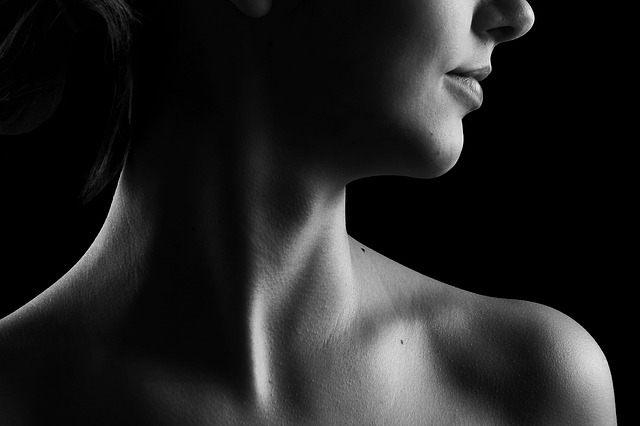Posts by OConnor
Text Neck: Posture in the 21st Century
Text neck is the preeminent posture of the 21st century
Your neck was designed with a lot of things in mind, but the cell phone is not one of them. The next time you are out in public take a look at how people interact with their devices: a common sight is the phone held below the chest and the neck craning down to read. Chances are you use your cell phone in just the same manner and this is problematic when you consider how much we use our phones during the day. Text neck is an overarching term for a host of conditions that result from the overuse of cell phones and the poor posture they inspire.
Elongation of the Spine is Feel Good Therapy
Spinal compression is a natural result of being on earth
It’s called gravity! The force that, for better or worse, keeps us rooted to the ground and is ever pressing us downward. And while the best thing for your spine would be to float around in space, gravity-free, the next best thing is spinal decompression. Here are some of the postures that put your spine under the most pressure:
- Forward-head posture
- Scoliosis
- Hyperlordosis
When left untreated, these configurations of the spine become even more exaggerated and will also contribute to narrowing of the spinal canal. At OFW Chiropractic, we know the way to deal with compressive forces: provide the spine with the decompression therapy. The question is: how do we go about achieving that?
Protecting your Neck in the Wake of Trauma
Whiplash!
Whiplash refers to damage of the soft tissues in the neck sustained by the abrupt forward-backward motion suffered most often in a rear-end collision. It most often causes acute symptoms such as neck pain and loss of range of motion but, if it is allowed to linger, it can develop into something more serious. Even the most “minor” car accidents can cause lasting damage; therefore, it is our opinion that anyone involved in an automobile accident can benefit from a chiropractic evaluation.
After the Workout: Activities that Make or Break Muscle Growth
What you do after the workout is important as the workout itself
Not every workout is created equal. At OFW Chiropractic we know that success improving cardiovascular health and building muscle both depend on the actions you take before, during and after your workout. It is important not to neglect a single phase; for example, skipping the warm up leaves your muscles cold as you start to strain them and injuries are a common result. But what actions can you take to follow up your workout and make sure you consolidate the hard work you’ve put in in the gym?
Let your Cells be Starved of Oxygen No Longer
Are you getting enough oxygen?
Every last cell in your body needs a constantly refreshing supply of oxygen in order to respire, repair and rebuild. Without fresh oxygen coming in, toxins accumulate and muscles often atrophy when anaerobic (read: oxygen deprived) cells die.
With Subluxation, Are you Selling your Health Short?
Are you allowing subluxation to linger?
Subluxation essentially refers to the spine moving out of alignment. The problem begins when, whether due to acute trauma or repetitive trauma over time, spinal joints move out of alignment and put pressure on the nearby nerves. You may feel pain in the back due to the nerve compression, but what you probably don’t feel is the dysfunction that accrues when this nerve is not able to send and receive signals clearly.
Muscle Tension has You all Tied Up
Muscle tension is a natural reaction
A natural reaction to mental and physical stress is muscle contraction- and when your muscles stay semi-contracted for a long period of time, pain and stiffness ensue. Furthermore, when your brain perceives mental stress, blood vessels constrict and less blood is able to flow to soft tissues including your muscles. This means less oxygen is reaching the cells within the muscle that need to perform respiration and more waste products are allowed to remain and accumulate. The byproduct of this system is pain or irritation in the muscles and this causes more stress, thus feeding back into the cycle.
Piriformis Syndrome: A Common Cause of Sciatica
Do you know your piriformis muscle?
The piriformis is small but powerful, a muscle located deep within the buttock that connects between the lower spine and the beginning of the femur. It’s function is to assist in rotation of the hip, but the piriformis is more well known for the problems it causes than for the way it assists your day to day movement. The problem is location: it just happens to sit right on top of the sciatic nerve, the longest nerve in the human body . In fact, in some people’s bodies, the nerve runs directly through the muscle. This sets up a scenario for impingement on the sciatic nerve.
Piriformis syndrome is nerve impingement at its finest
How we Help Athletes Push Further in Westwood
Chiropractic is tailor made for athletes
Pushing further in a chosen sport comes down to specialization- of both body and brain. As you grow in your sport, your body is developing a unique set of muscles that help you perform the way your brain demands. Chiropractic is about regulating the link between brain and body, and maintaining a high level of care for your body to mitigate injury and excel. More professional athletes than ever are choosing chiropractic as part of their physical health portfolio; will you join them?
Treating Frozen Shoulder in Westwood
Frozen shoulder can take up to a year to go away (by itself)
Also known as adhesive capsulitis, frozen shoulder often occurs after an injury and it causes symptoms of stiffness, pain and reduced range of movement. Whether the injury sustained was acute or cumulative, the tissues surrounding the shoulder joint stiffen and scar tissue forms; once this motion is set in process, any movement involving the shoulder (and just think, there are many) can cause pain.
Further symptoms of frozen shoulder:
- Constant pain of varying degrees
- Pain worse at night and in cold weather
- Associated neck and back problems
- Difficulty sleeping due to pain










